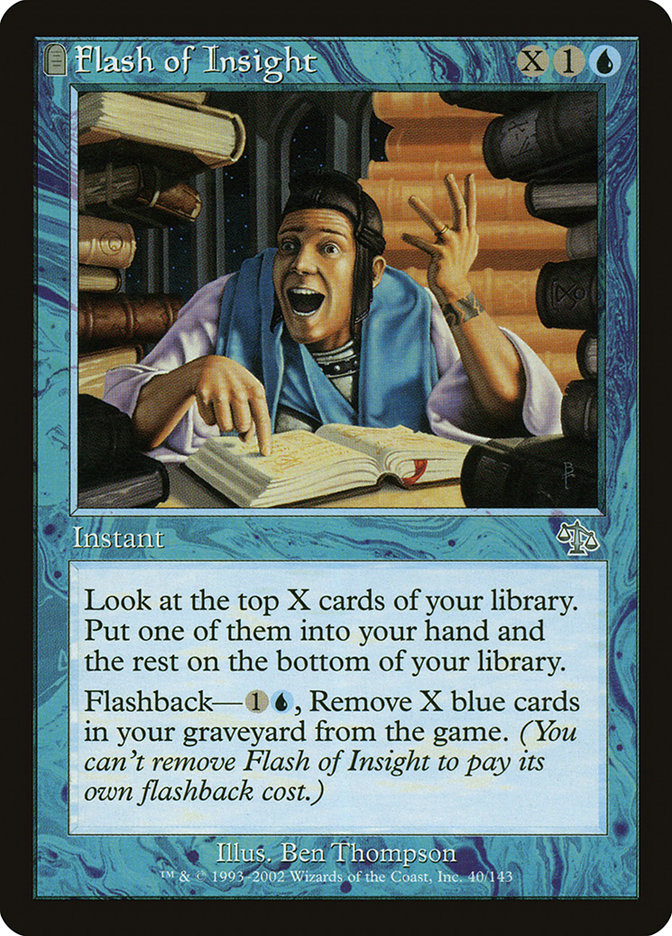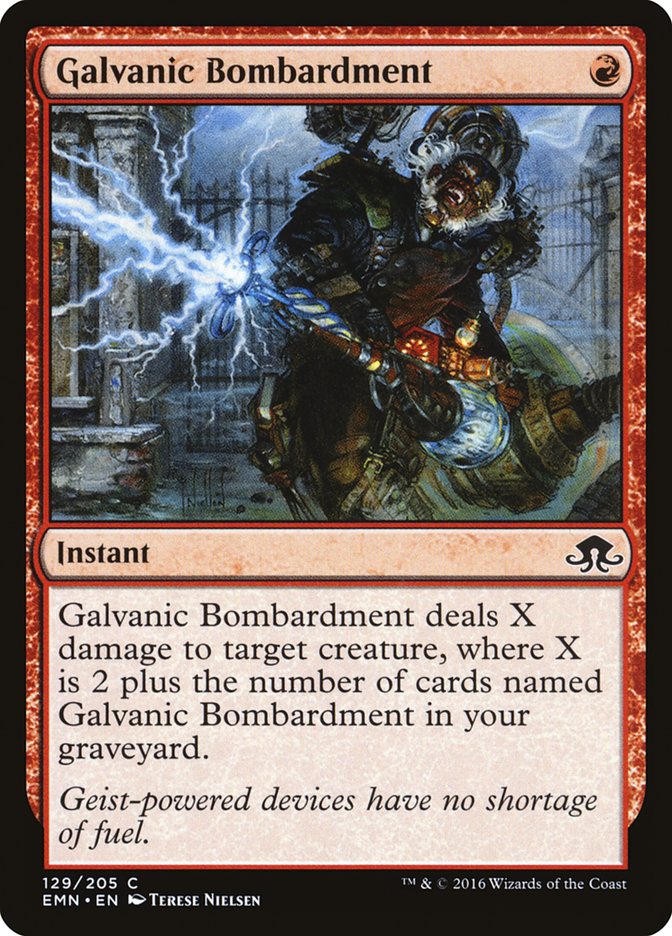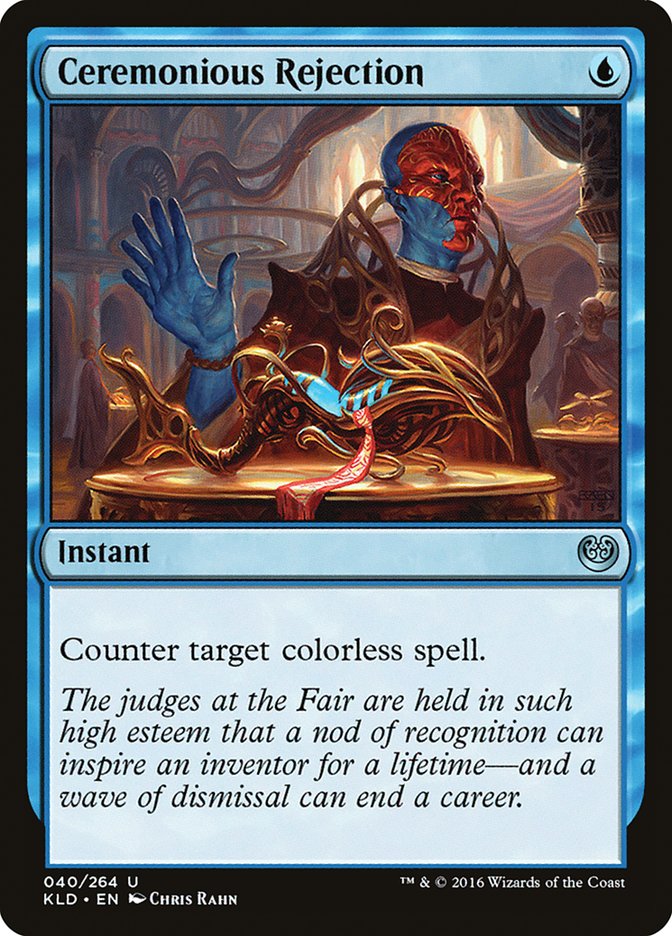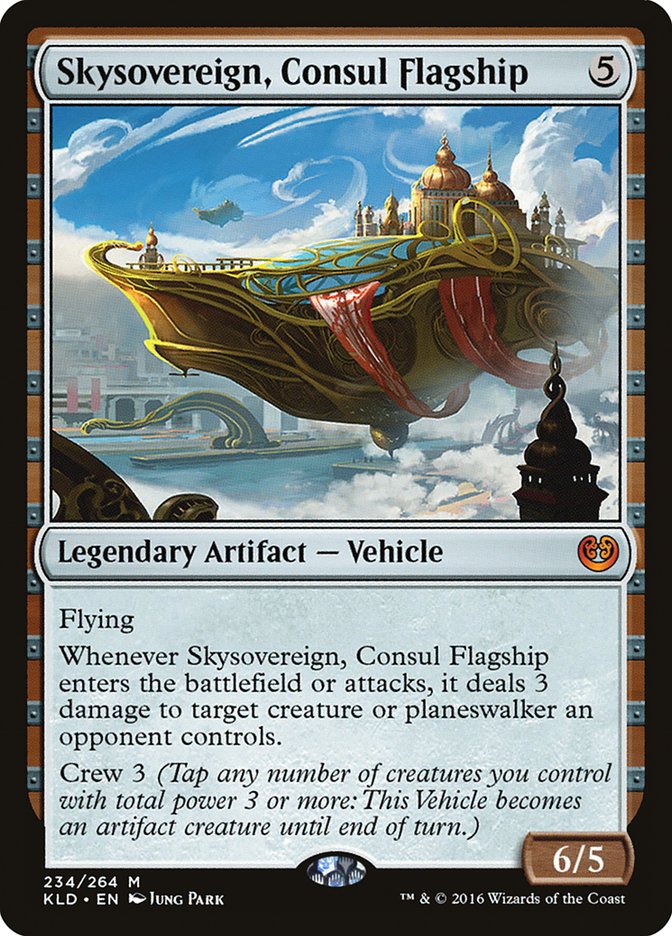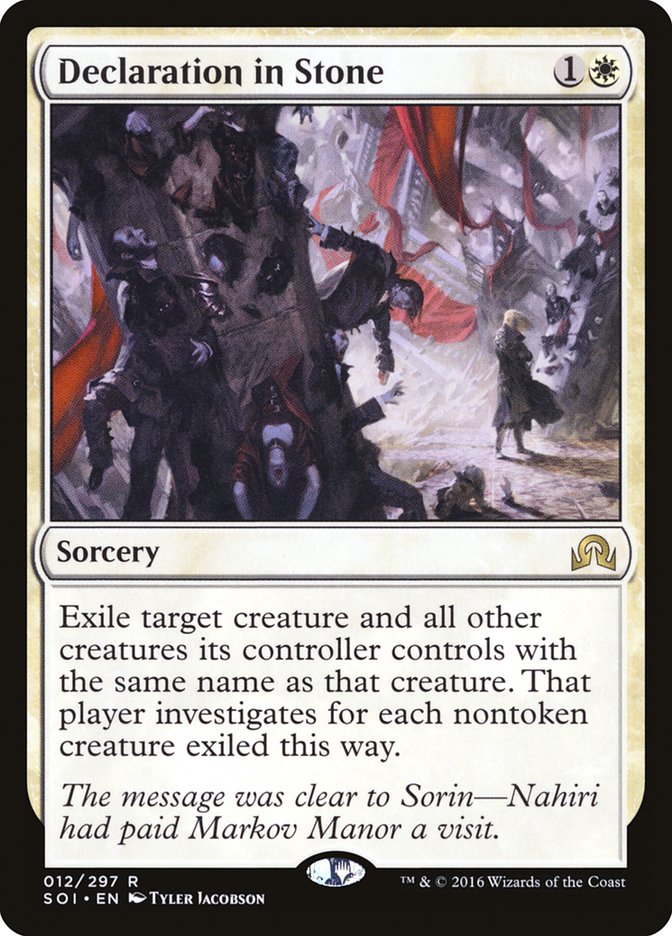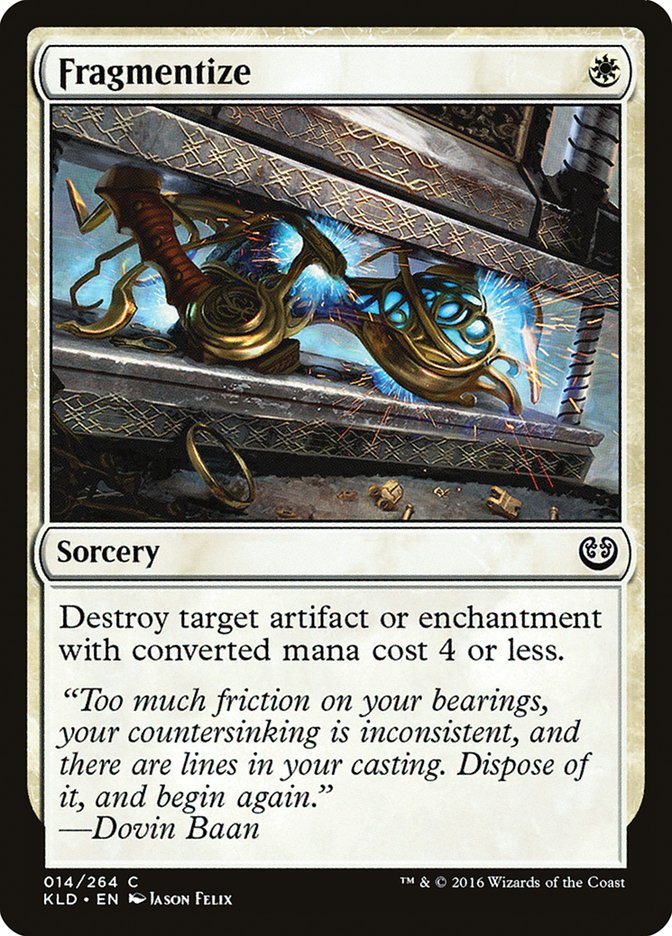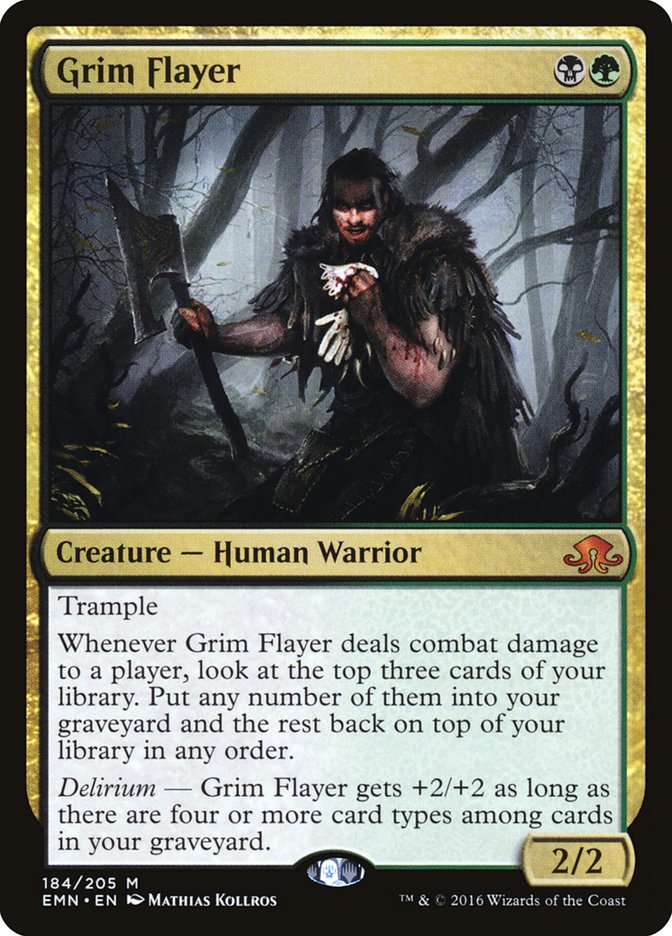A few weeks ago, I covered Mardu Vehicles, among other things saying, “Watch out, Denver. Somebody might just drive their ride all over you, license be damned.”
While Mardu Vehicles didn’t crush in Madrid, it did crush in Denver in the hands of pilot Matt Severa, a former teammate of mine on Team UltraPro and a longtime friend.
Creatures (22)
- 4 Thraben Inspector
- 3 Thalia, Heretic Cathar
- 4 Scrapheap Scrounger
- 4 Toolcraft Exemplar
- 3 Inventor's Apprentice
- 4 Veteran Motorist
Planeswalkers (2)
Lands (22)
Spells (14)

Matt was probably the first truly “good” player I met when I moved to Madison in the ’90s, and I have suffered many a defeat at his hands over the years. His win at GP Denver is making for a pretty great year for him, with it being his third GP win this year. Damn.
In talking to Matt about it, he said something I found very compelling about the current state of Standard. Personally, I’ve been enjoying the format a lot, but his take was illuminating.
“This format doesn’t have a lot of lopsided matchups. People say all sorts of stuff like ‘X beats Y’, when really most matchups are much closer to coin flips. Mardu Vehicles ‘beats’ W/U Flash and Aetherworks decks in that it’s slightly favored over all and is great if you with the coin flip. Mardu ‘loses’ to B/G Delirium in that its basically 55/45, but it’s close or might even be favored if you win the coin flip.
“Also, the Flash and Delirium matchup and the mirror matches can get pretty complicated. Those decks had been explored so thoroughly, Vehicles felt like a good choice for people in my situation: people who just want to leverage their general technical knowledge but might not have as much current Standard experience.
“I was pretty sure either Flash or Delirium would end up positioned badly for the GP. As it happened, Delirium was basically gone from the top tables, leaving a lot of Flash and Aetherworks decks, and Panharmonicon was just a dog to Vehicles, so things ended up pretty well for me. I lost to B/G Delirium in Round 4, but that was the only time I saw that matchup, and my only loss of the event.”
Matt made a lot of sense to me. Having watched and played a lot of matchups both with and against the most popular decks, it really had felt to me that things were incredibly close, and very small decisions could have subtle impacts in the outcome of a single match. All told, the best decks all felt very close in their ability to do powerful things, and while I’d lose games where I simply felt unlucky, it still, overall, felt as if questions like “How good is your plan?” and “How good are you at executing that plan?” were having a significant impact in the results of matches.
There have been moments in time where I’ve chosen to not play a so-called “Best Deck” in large part because I expected that the places I came up short in preparation and experience with that deck put me at a huge disadvantage against too many potential opponents. (If you aren’t sure how that works, check out this article which uses the example of Faeries during its heyday.) Bypassing that dilemma by playing another powerful and rational deck has always been a good strategy.
My own explorations for alternatives to the major decks had taken me many places, from a less “delirious” B/G to a four-color Tamiyo-Energy Aggro deck to Mardu Vehicles. Of them all, Mardu Vehicles was the deck that simply kept performing the best as well as having the best pedigree out in the real world.
Here was the winning deck of an online PTQ that really made me take notice (with two other similar decks also in the Top 8):
Creatures (22)
- 4 Thraben Inspector
- 2 Thalia, Heretic Cathar
- 4 Scrapheap Scrounger
- 4 Toolcraft Exemplar
- 4 Inventor's Apprentice
- 4 Veteran Motorist
Planeswalkers (2)
Lands (22)
Spells (14)

Severa’s deck is unsurprisingly similar to what we see here in Rastaf’s deck, especially if we keep in mind some of the shifts that were happening at that time.
As that deck was being played, the metagame was really beginning to stratify into the “Big Two” Delirium and Flash that we’re seeing now. In the face of that, Rastaf added in Thalia, Heretic Cathar, an incredibly good card in a Vehicles metagame, and moved in that fourth Veteran Motorist that hadn’t made the cut until that point and the third Cultivator’s Caravan. An extra Gideon, Ally of Zendikar in the sideboard also appears. All of this is a decision to increase the short-game.
Severa, for his part, continues this wave, changing only a few cards, but notably upping the Thalia count one more notch and adding yet more Gideon, Ally of Zendikar and Vehicles in the sideboard.
Here is his GP Denver-winning list:
Creatures (22)
- 4 Thraben Inspector
- 3 Thalia, Heretic Cathar
- 4 Scrapheap Scrounger
- 4 Toolcraft Exemplar
- 3 Inventor's Apprentice
- 4 Veteran Motorist
Planeswalkers (2)
Lands (22)
Spells (14)

One of the clearest differences between his deck and previous builds is that he has a very streamlined sideboard. Four copies of Ceremonious Rejection, Galvanic Bombardment, and Gideon, Ally of Zendikar (once you take into account the maindeck) make for consistent behavior for the deck.
When you want a Gideon, you want a Gideon. I can tell you as someone who has been trying to make Void Shatter work that there are few things more horrifying to face down than this planeswalker. This card is so powerful, I’m currently playing it in Legacy, so the fact that you have access to it in the world of Standard makes this card a big draw.
About the only place you’re not particularly excited for the card is versus fliers, so it isn’t a ubiquitous card for you; while you like the card in general versus W/U Flash, running four isn’t necessarily the best way to think about the card. Sticking with two main makes sense, given how popular Flash currently is.
What was true before now at the last PT is still true now: if you have red, the best removal you can have if you’re in the market for cheap removal is Galvanic Bombardment. Here mostly as a means to take care of another aggressive deck, this card might not be wildly useful otherwise, but it is probably necessary (and likely to get more so).
Take that, Aetherworks Marvel!
While some builds of this deck have run less than four Ceremonious Rejection or they’ve mixed and matched with Revolutionary Rebuff, Severa’s list makes it simple: beating Aetherworks Marvel is hard, so let’s just not let that happen.
This is an incredibly scary card if you can expect that the triggers from the powerful Vehicle can make an active impact on the battlefield. Even against a more controlling deck, the damage is powerful, but when you’re actually directly removing creatures with it, it can matter a lot.
The size of the Flagship as a creature is important as well, since it can hold off an Archangel Avacyn or basically nearly any flier.
If you want to get rid of a big creature, this is one of the best cards to do so. Not only are you able to get rid of the truly absurd creatures like Emrakul, the Promised End, but even if you are removing something much, much smaller, there is a good likelihood that your opponent will be hard-pressed to actually draw their extra card, given how much pressure you can put on with this amazing sorcery.
It’s a classic choice to include one strong Disenchant-style card in aggressive decks. More than this can sometimes bog down your supposed-to-be-attacking deck with too much of a reactive stance. Less than this (zero) simply means you have to accept every card you could have chosen to have an out to with your artifact/enchantment removal. While I don’t believe this card is 100% necessary, I think it is likely correct. If I didn’t run this, I’d probably choose something like a single Quarantine Field (though I still prefer the Fragmentize).
I’m not typically a huge fan of sideboard guides, but here were some of the basic plans that Severa shared with me, albeit often with alternative choices based on the small distinctions between different versions of the same deck.
W/U Flash
Out:
In:
Skysovereign, Consul Flagship can totally dominate a mid- to late-game. Their tempo game will blunt the utter aggression of a card like Inventor’s Apprentice, so you can’t necessarily count on the success of the Nerd Ape.
B/G Delirium
Out on the play:
Out on the draw:
In:
The reason for the distinction in sideboarding comes down to two cards:
When you’re on the draw, Veteran Motorist looks pretty silly versus Liliana. In addition, you really, really want to kill that Grim Flayer before it can connect. When you’re on the play, you have less to worry about with either of those cards and are more apt to want to keep things aggressive and force that Grim Flayer to simply cope with its need to stay on defense.
Aetherworks
Out:
In:
Severa made a special note that it is possible that you might only sideboard in a single Gideon, Ally of Zendikar when you were on the draw, making room for a Declaration in Stone if you were playing against the creature-heavy builds, as you are in many more situations where you wouldn’t simply drop a turn 4 Gideon because you wanted to keep a Ceremonious Rejection up.
In Standard, this is definitely one of my favorite decks. While I’m playing way more control right now, trying to see if I can find a configuration I like enough to play in a larger event, Mardu Vehicles is my current default favorite aggressive deck. It is unforgiving to an opponent, powerful in its own right, and solidly in the running even against decks where it has a bad matchup.
With the recent win, the normal ebb and flow of Magic will make this a slightly less reasonable deck to choose moving forward, but that will still make it a great choice.
This coming weekend, I’ll be taking the short hop to Milwaukee for the Grand Prix. I hope I see you there, slinging the Sealed Deck and Draft. If you aren’t playing Limited, I hope you’re rocking the Mardu somewhere out there!


